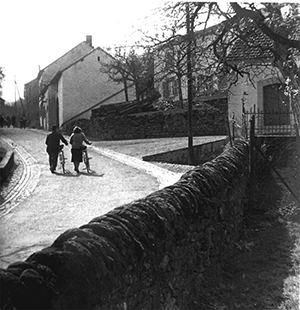
The “rue Andethana” once
The old village of Oberanven is one of these typical « street villages » with its « rue Andethana » as the main road, parallel to the brook « Staflick » (or Hostert brook).
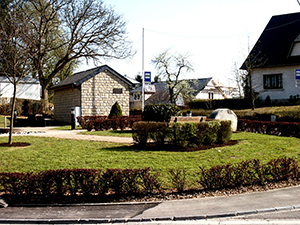
The village square of Oberanven with the millstone set up in honor of our local historian Emile Erpelding.
A street village is characteristic for the absence of a village centre or village place. In 1997, at the occasion of demolition of the house at the intersection of the “rue du coin” and the “rue Andethana”, a kind of central place in form of a little green space, a busstop, little paths with benches and a monument in memory of the local historian and national chronicler Emile Erpelding had been set up.
In 1988 Emile Erpelding received from the Rhineland authorities the “Rheinlandtaler” awards for his survey about the regional and linguistic culture. Emile Erpelding was also famous in the outer region for his work “The Luxembourg mills”.
The mills in Oberanven
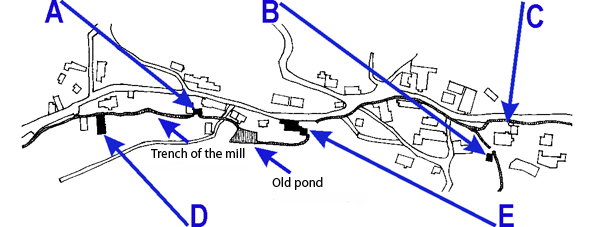 4 large adjacent mills were running in Oberanven, supplied by the water of the Hostert brook (Staflick): the Werner mill (the ban mill of Oberanven), the Kinnen mill, the Zammesch mill and the saw mill.
4 large adjacent mills were running in Oberanven, supplied by the water of the Hostert brook (Staflick): the Werner mill (the ban mill of Oberanven), the Kinnen mill, the Zammesch mill and the saw mill.
Over the centuries they marked the general aspect of the village and determined its economic situation. The mills had different purposes: there was a cereal mill, a paper mill and a saw mill.
The functions of the mills could be adapted to the needs and the buildings could be enlarged according to the economic situation.
The Werner Mill
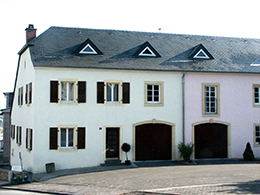 |
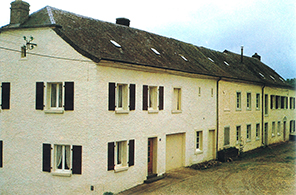 |
The Werner mill, also called “Werneschmillen” can be considered as the ban mill of Oberanven.
Its origin goes back to the year 1605. During that time the production depended on the landlord, who ordered a miller to be at his service.
The old cereal mill had been transformed into a paper mill from 1824 to 1842, before being changed again into a grind mill until the 20s and 30s of the 20th century.
The Zammesch Mill
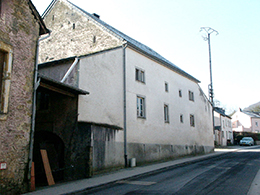 |
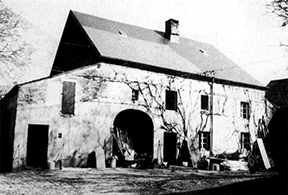 |
The Zammesch Mill was founded in 1797 as a flour mill and had its name from the Zimmer family, living on the site until 1729. Up from 1811, the mill had been working into a paper mill until the second half of the 19th century. Later on until the 30s of the 20th century, the mill worked as a cereal mill.
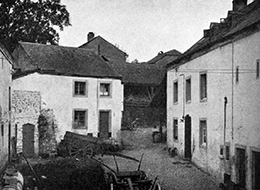 The old Kinnen Mill |
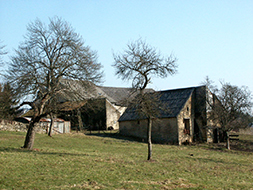 The old saw mill |
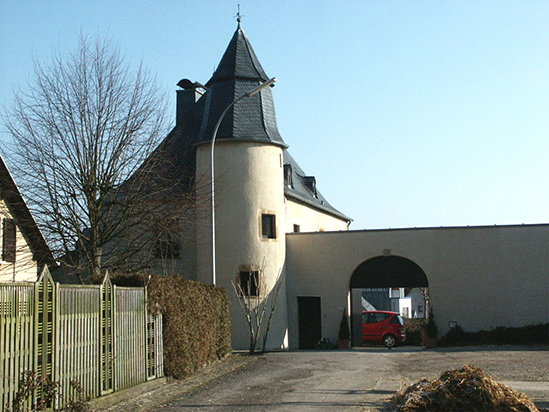
The property of the old Feltz Family
